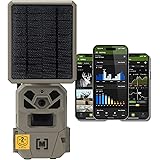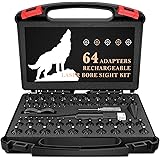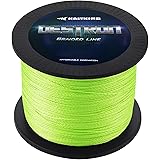Jungle Survival Cooking: Mastering Primitive Methods in the Wild
In challenging wilderness environments, particularly within the dense jungle, the ability to cook without modern conveniences is an indispensable skill. The video above visually demonstrates raw ingenuity, focusing on techniques such as hot rock cooking and the creation of primitive cooking vessels. These methods represent a profound connection to ancient survival practices, proving that resourcefulness can overcome extreme limitations.
The essence of jungle survival cooking lies in adapting to the environment, utilizing readily available natural resources to prepare sustenance. This involves not only the cooking process itself but also the careful selection of materials, the safe procurement of ingredients, and an acute awareness of the surrounding ecosystem.
The Art of Primitive Cooking: Hot Rock Techniques
Hot rock cooking is a foundational technique in primitive culinary arts, employed across various cultures for millennia. This method harnesses the heat-retaining properties of stones to cook food, boil water, or create an oven-like environment.
For successful hot rock cooking, the selection of appropriate stones is paramount. It is understood that dense, non-porous rocks, such as granite or basalt, are preferred; river rocks are often chosen for their smoothness and density. Porous rocks, including those collected from riverbeds that might have trapped moisture, are to be avoided as they can explode when heated, posing a significant safety risk. The heating process typically involves placing the chosen rocks directly into a roaring fire for an extended period until they are glowing hot.
Once adequately heated, these stones are carefully transferred to the cooking area using sturdy sticks or tongs. They can be placed directly into a pit for baking, used to heat water in a primitive vessel, or buried with food for slow cooking. Boiling water is effectively achieved by dropping superheated rocks into a water-filled container, causing the water to rapidly come to a boil. This method is crucial for purifying drinking water and preparing stews.
Building a Wilderness Cooking Vessel: The Tree Trunk Pot
The concept of using a hollowed-out tree trunk as a cooking vessel showcases extraordinary wilderness innovation. This primitive pot allows for the preparation of stews and the boiling of liquids when no other container is available.
Creating such a vessel often involves a method known as charring and scraping. A section of a fallen tree trunk is selected, ideally from a wood species that is dense and resistant to burning through quickly, while also being non-toxic. A small fire is then built directly within the chosen section, and as the wood chars, the burnt material is scraped away with a rock or stick. This process is repeated until a sufficiently deep and wide basin is formed. It is important that the walls remain thick enough to hold liquids without leaking or burning through during the cooking process.
Once the tree trunk pot is prepared, it is typically filled with water and other ingredients for a stew. Hot rocks, heated in a separate fire, are then carefully placed into the water within the trunk. The radiant heat from these stones gradually brings the liquid to a boil, cooking the contents. This ingenious method allows for sustained cooking, making it possible to create nourishing meals in the heart of the jungle.
Crafting a Wild Stew: Foraging and Preparation
The creation of a “wild stew” in a survival scenario necessitates both careful foraging and thorough preparation of ingredients. Understanding what is edible and how to safely prepare it is a critical aspect of jungle survival cooking.
Foraging in the jungle requires extensive knowledge of local flora and fauna. Edible plants might include certain roots, tubers, leaves, and fruits, but extreme caution must be exercised due to the high number of poisonous species. Identifying plants correctly is paramount; if there is any doubt, consumption must be avoided. Animal protein sources could involve insects, small game, fish from rivers, or even larger animals if hunting skills are possessed and opportunities arise. However, the presence of larger predators, such as a boa as hinted by the video’s title, implies that one must also be acutely aware of who or what might be foraging for *them*.
All gathered ingredients must be meticulously cleaned. Plant matter is washed, and any potentially harmful parts are removed. Animal proteins are gutted and thoroughly cooked to eliminate parasites and bacteria. Boiling the stew for a prolonged period in a tree trunk pot, heated by hot rocks, ensures that ingredients are rendered safe for consumption and flavors are fully developed. This careful preparation is essential for maintaining health and energy in a challenging environment.
Fire in the Jungle: Essential for Survival Cooking
Establishing and maintaining a fire in the humid, often wet conditions of a jungle environment presents unique challenges. Yet, fire is indispensable for jungle survival cooking, providing heat for cooking, boiling water, and deterring wildlife.
Traditional friction fire methods, such as the bow drill or hand drill, can be employed, though they require dry tinder and a great deal of practice. Materials for tinder (like dried fern spores, tree bark fibers, or bird nests) and kindling (small, dry sticks) must be diligently sought out, often in protected areas under overhangs or within hollow logs. Larger fuel wood also needs to be gathered, and efforts are typically made to select drier, standing deadwood rather than wood directly on the ground, which is often waterlogged.
Once a fire is established, it must be carefully managed to ensure a consistent heat source for cooking. Building a small, contained fire minimizes fuel consumption and allows for better heat control, particularly when heating rocks for a tree trunk pot. This constant attention to fire management is a critical aspect of sustained jungle survival cooking.
Beyond the Pot: Water, Safety, and Environment
Beyond the immediate act of cooking, several other factors are intrinsically linked to successful and safe jungle survival cooking. These include water purification, constant awareness of wildlife, and adherence to environmental responsibility.
Water purification is non-negotiable in any survival situation. While hot rocks in a tree trunk pot facilitate boiling water, thus making it safe to drink, additional methods like primitive filtration through layers of sand, charcoal, and cloth can be considered to improve clarity before boiling. Potable water is as crucial as food for survival.
Situational awareness, particularly regarding wildlife, is vital. The mention of a “boa overhead” in the video’s title serves as a stark reminder of the jungle’s inhabitants. Food must be secured, and a camp should be established with an understanding of animal behavior. This includes protecting food from scavengers and being alert to the presence of venomous snakes, insects, and other potentially dangerous creatures. Safety is always a primary concern when practicing jungle survival cooking.
Finally, practicing Leave No Trace principles is an ethical imperative. This means minimizing impact on the environment, disposing of waste properly, and leaving the area as undisturbed as possible. Sustainable foraging and careful use of natural resources ensure that the wilderness remains pristine for future generations.











